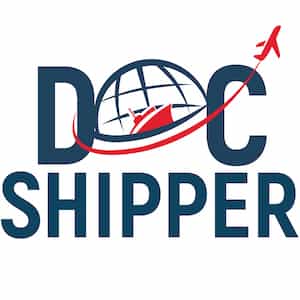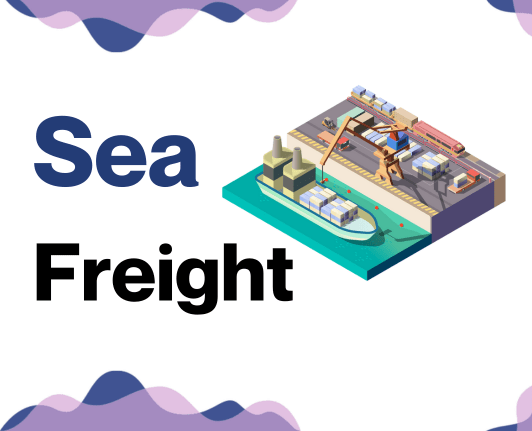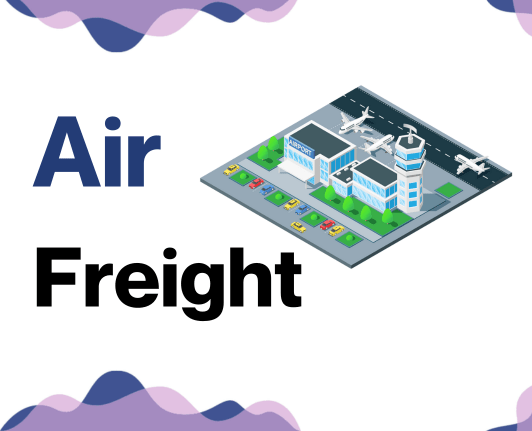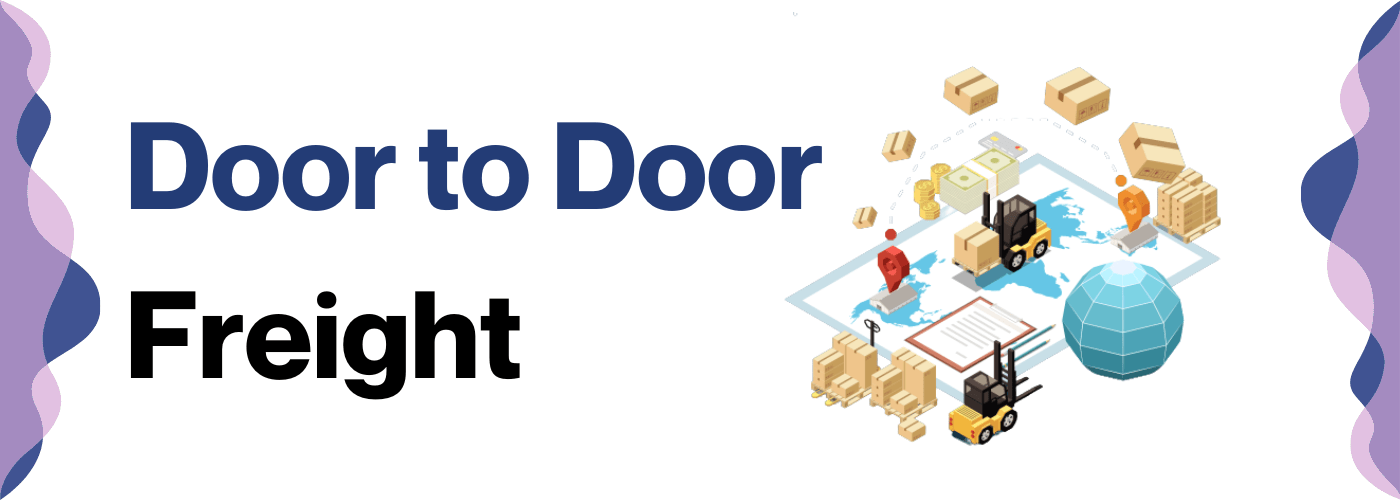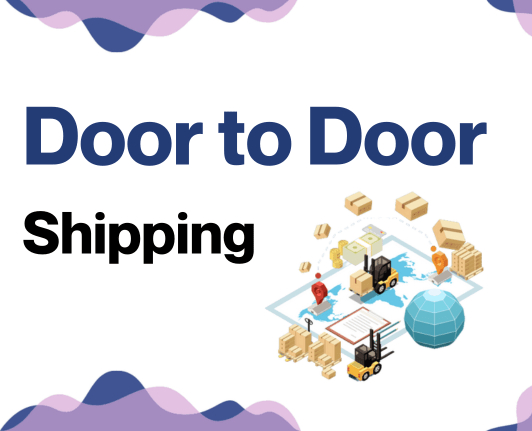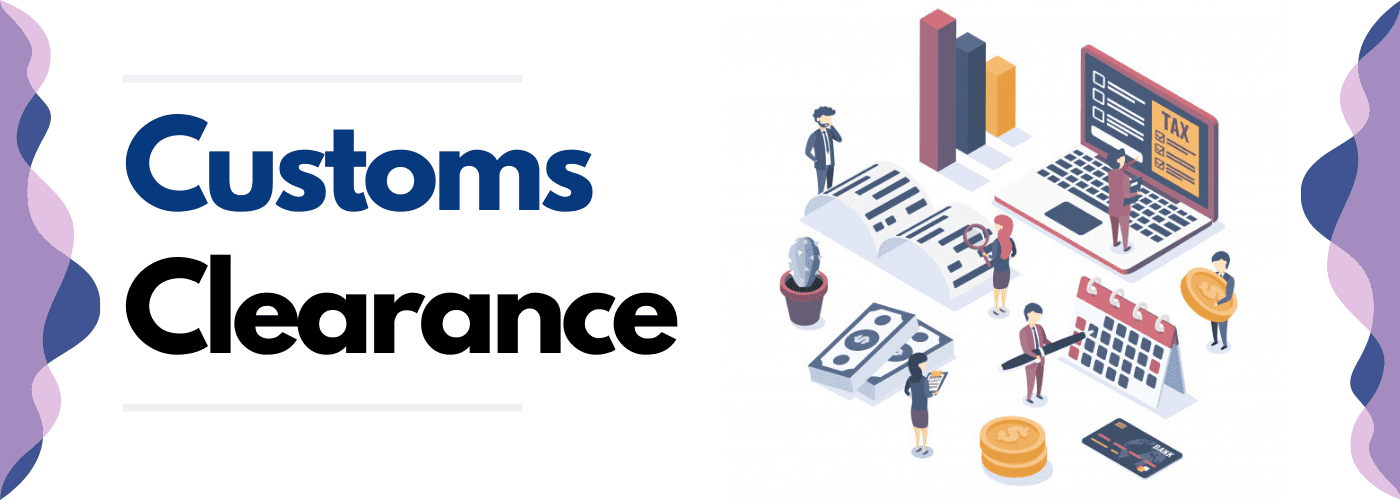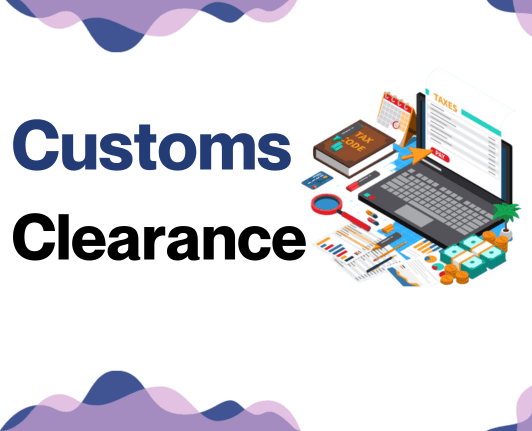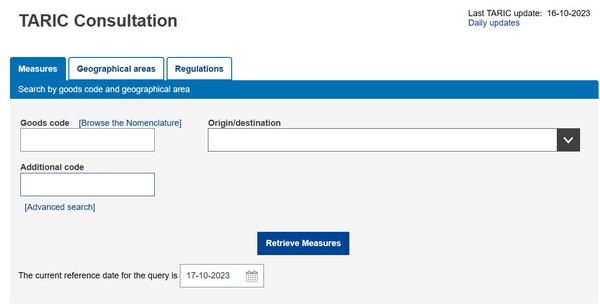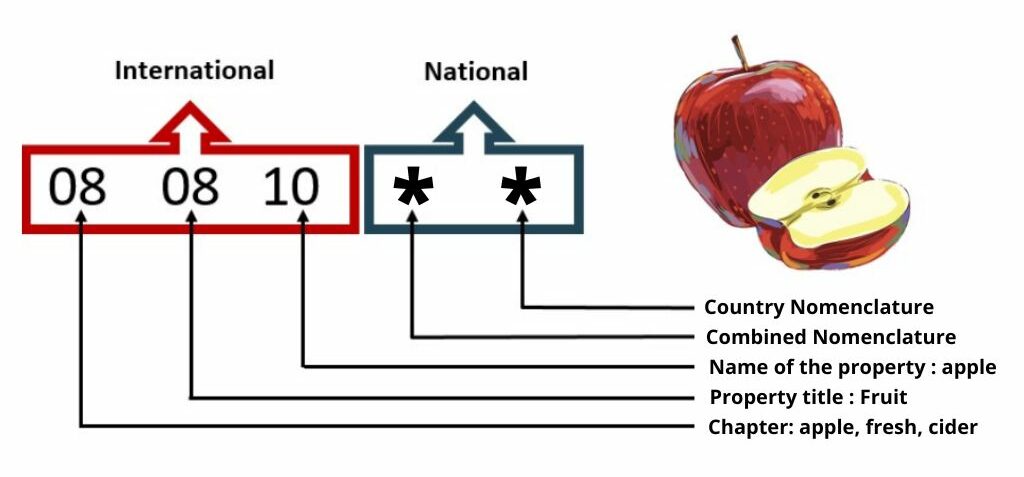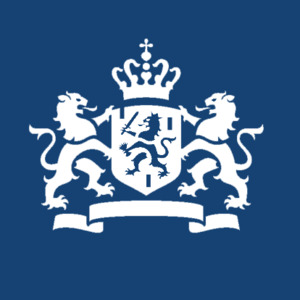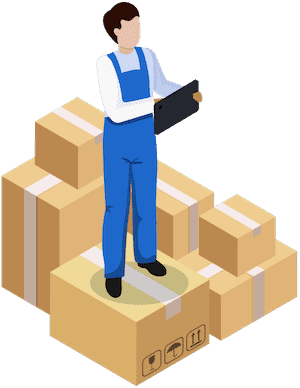Who said freight shipping between Malaysia and the Netherlands has to be as tricky as eating soup with a fork?
Understanding rates, managing transit times, and navigating through the maze of customs regulations can indeed create headaches bigger than deciphering a Dutchman's palindrome.
Fear not! This guide is designed to shed light on the intricacies of both air and ocean freight, the ins and outs of customs clearance, the mysteries of duties and taxes, and to provide sound advice specifically suited for businesses. By the time you're through, you'll be armed with the knowledge necessary to send your cargo confidently on its way.
If the process still feels overwhelming, let DocShipper handle it for you! As an international freight forwarder, we excel at transforming shipping challenges into success stories for businesses worldwide.
Table of Contents
Which are the different modes of transportation between Malaysia and Netherlands?
Imagine crossing from Malaysia to the Netherlands, two nations set miles apart. This trek ushers us across long distances and diverse terrains.
Oceans, mountains, and international borders can limit our choices, leaving air and sea freight as the main contenders. Scouting for the right transport method is like choosing a path during a hike. Essential to save on time, money, and hassle.
Making the right choice hinges on understanding the unique needs for your cargo and aligning them with the stark geographical realities of traveling from the tropical heart of Southeast Asia to the low-lying plains of Northwestern Europe.
How can DocShipper help?
Looking to ship goods between Malaysia and the Netherlands? At DocShipper, we decomplexify the process. Offering seamless, end-to-end solutions, we handle every essential—from transport organization to customs clearance. Ready for an effortlessly smooth shipping experience? Let our experts guide you. Contact us now for a free, quick estimate in less than 24 hours or call our consultants at no cost. We're here, round the clock, for you.
DocShipper Tip: Sea freight might be the best solution for you if:
- You're dealing with hefty quantities or oversized goods. Sea transport is your go-to for maximizing space without stretching your budget.
- Time sensitivity isn't a concern for your shipment. Ocean freight is known for its leisurely pace, especially when compared to the speed of air or rail.
- Your supply chain connects key international harbors. This positions you to take full advantage of a wide-reaching network of ocean trade routes.
Sea freight between Malaysia and Netherlands
Dutch tulips and exquisite Malaysian palm oil have more in common than you'd think. They are both milestones of a prosperous maritime trade corridor, stretching from the dynamic ports of Port Klang and Johor to the bustling hubs of Rotterdam and Amsterdam.
Sea freight between Malaysia and the Netherlands weaves a complex yet advantageous path, offering cost-effective solutions for high-volume goods. Yes, it's a slow-paced dance, but one that grants significant financial leeway.
Yet, sailing is not all smooth in these waters. Shippers often face labyrinthine customs procedures, intricate paperwork, and unpredictable cost spikes. The fear of these three monsters can transform an otherwise stress-free process into a shipwreck.
The good news? There's a compass to guide you through these challenges. This part of our guide unravels best practices to help you weather the storm, streamlining your operations and saving you from common pitfall. Only by knowing the tricks of the trade can you successfully navigate the route to smooth sailing.
Don't fret, this journey together begins now.
Main shipping ports in Malaysia
Port Klang:
Located on the western coast of Peninsular Malaysia, this port Port Klang is a key gateway to the country, handling over 13.2 million TEU annually. Its proximity to the capital, Kuala Lumpur, makes it highly connected and strategically placed.
Key Trading Partners and Strategic Importance: Port Klang's main trading partners include China, Singapore, the European Union, and the USA. Its two main terminals, Northport and Westport, provide a variety of options for cargo handling, making it strategically important for transshipment of goods.
Context for Businesses: If your strategy involves shipments across the Asia-Pacific region or towards Europe and America, Port Klang's accessible location and comprehensive facilities are factors to consider. It's the perfect entrance to the rapidly growing Malaysian market.
Penang Port
Nestled in the North-western tip of Peninsular Malaysia, is the country's oldest port dating back to 1786. The port offers comprehensive logistics solutions and handles about 1.52 million TEU per year.
Key Trading Partners and Strategic Importance: Its key trading partners include China, Singapore, India, and Indonesia. Digitally advanced, it has automated processes for cargo handling and provides added strategic importance for businesses aiming to leverage Malaysian-Indian trade routes.
Context for Businesses: If your business seeks to capitalize on India - Southeast Asia trade corridors, Penang Port's strategic location makes it a valuable logistics hook for companies in the electronics, oil, and gas industries.
Johor Port
Is positioned right at the southern tip of Peninsula Malaysia. Being in the busy Strait of Malacca, it handles about 0.99 million TEU per year.
Key Trading Partners and Strategic Importance: Key trading partners include the United States, Japan, China, and Singapore. Johor Port serves as a critical transportation link, especially for businesses that target ASEAN, Middle East, and Indian markets.
Context for Businesses: With its blend of conventional and unconventionally bulk cargo, Johor Port provides comprehensive logistics capabilities. Businesses aiming to connect to ASEAN countries might find Johor Port fitting into their shipping strategies effectively.
Port of Tanjung Pelepas
Located in Johor, The Port of Tanjung Pelepas (PTP) strives to meet the characteristics and needs of every shipping line operator worldwide. Handling 8.96 million TEU annually, it's a significant port for large-container ships.
Key Trading Partners and Strategic Importance: Major partnerships include China, Europe, and the U.S.A. PTP, being the largest transshipment hub in Malaysia, strategically caters to the vital Asia-Europe trade route.
Context for Businesses: PTP’s high terminal productivity and its strategic position make it an attractive port for businesses running large-scale operations in Europe and Asia, particularly suitable for businesses seeking faster turnaround times.
Kuantan Port
Situated on the East Coast of Peninsular Malaysia. Kuantan Port is the gateway to the Asia-Pacific region and handles approximately 27 million freight weight tons of cargo a year.
Key Trading Partners and Strategic Importance: The port's trading partners include Thailand, China, and India. As it’s the terminal point of the East Coast Rail Link, it plays an essential role in One Belt, One Road (OBOR) initiative facilitating trade with China and beyond.
Context for Businesses: Given its critical position in the OBOR initiative and locally versatile connectivity, businesses wanting to penetrate the Asia-Pacific markets might opt Kuantan Port as their shipping route.
Bintulu Port
Located on the island of Borneo in East Malaysia, is the busiest port in Sarawak region. It handles diverse cargo types including containerized, dry bulk and liquid bulk cargo.
Key Trading Partners and Strategic Importance: Major trading partners include Australia, Japan, and China. It serves a critical role in the export of Malaysia's natural resources, particularly in LNG.
Context for Businesses: Owing its strengths to resource exports, businesses in commodities, energy, and mining sectors may find Bintulu Port a boon for connecting to Asia-Pacific and Australian markets.
Main shipping ports in Netherlands
Port of Rotterdam
Location and Volume: Located in the province of South Holland, the Port of Rotterdam is Europe's largest, with a total shipping volume exceeding 14.8 million TEU in 2019.
Key Trading Partners and Strategic Importance: The port facilitates trade with key partners like China, Russia, and the United States, handling approximately 385 million tonnes of cargo annually. Its position near the Rhine and Meuse rivers makes it a strategic hub for transporting goods inland across Europe.
Context for Businesses: If you're seeking to venture into the European market, particularly western and central regions, the Port of Rotterdam operates as a critical gateway, providing extensive connections by road, rail, and inland waterway networks, and hosting over 500 direct international shipping services.
Port of Amsterdam
Location and Volume: Situated in North Holland, the Port of Amsterdam is the second largest port in the Netherlands and the 4th largest in Europe, with a cargo volume of around 100 million tonnes in 2020.
Key Trading Partners and Strategic Importance: Key commodities moving through the port are agribulks, coal, oil products, and construction materials. Its strategic importance lies in its role as a vital logistics hub linking European hinterland markets to the northern sea routes.
Context for Businesses: If your business specializes in energy, metallurgy, or agrofood, leveraging the Port of Amsterdam's well-established infrastructure could streamline your logistics, considering its focus on those sectors and innovative developments like its circular economy initiatives.
Moerdijk Port
Location and Volume: Moerdijk Port, located in the province of North Brabant between Rotterdam and Antwerp, may be smaller in comparison with Rotterdam and Amsterdam, but its strategic location makes it an attractive option. It processed 18.5 million tonnes of cargo.
Key Trading Partners and Strategic Importance: Moerdijk Port’s primary trade partners include the UK, Russia, and Scandinavian countries. Its key strategic aspects include a direct sea link to the North Sea, a fluvial link to the European hinterland, and direct rail and road connections to main European cities.
Context for Businesses: If you're contemplating a well-connected port offering multimodal logistics solutions for your regional distribution needs, Moerdijk Port’s prime situation and diverse industrial terrain offer opportunities for excellent links to the European market.
Port of Groningen
Location and Volume: Situated in Northeast Netherlands, the Port of Groningen processes a yearly shipped volume of around 15 million tonnes, making it an essential logistic hub in Northern Netherlands and Northern Germany.
Key Trading Partners and Strategic Importance: The port focuses on both international and inland shipping, with Germany being its principal trading partner. It has a strategic focus on developing a sustainable green port with innovations in renewable energy and bio-based economy.
Context for Businesses: If your business is aligned with ecologically sustainable strategies, the Port of Groningen, with its green port vision, provides a promising site to connect your products efficiently to the European continent and beyond by exploiting their eco-infrastructures.
Port of Vlissingen
Location and Volume: Located in Zeeland, South Netherlands, the Port of Vlissingen, also known as North Sea Port, maintains a robust shipping record, having handled around 71 million tonnes of cargo in 2020.
Key Trading Partners and Strategic Importance: North Sea Port plays a major role in the transshipment of goods to Scandinavia, the UK, and the Baltic region. It is strategically important due to its coastal access to the North Sea, and its land access to European inland markets.
Context for Businesses: If your shipping needs involve reaching Scandinavia, the UK, or the Baltic region, strategically located North Sea Port, with its comprehensive multi-modal transport services, could be a worthwhile addition to your distribution strategy.
Should I choose FCL or LCL when shipping between Malaysia and Netherlands?
Choosing the right sea freight option between Malaysia and the Netherlands is paramount to your shipping success. Whether you decide on Full Container Load (FCL) or Less than Container Load (LCL), when done correctly, it can optimize costs and delivery time.
This section will shed light on these two popular methods, catering it to your unique needs. Let's dive into understanding which option might best serve your business, influencing not just your bottom line, but your overall logistics performance.
LCL: Less than Container Load
Definition: LCL, or Less than Container Load, refers to shipments that take up only a fraction of a cargo container’s total capacity. In LCL shipping, multiple shippers share a single container, each paying for their share of the space— a flexible and cost-effective option primarily for low-volume cargo.
When to Use: An optimal time to employ LCL shipment is when your cargo totals less than 13 to 15 CBM, making it advantageous for small to medium enterprises and occasional shippers.
Example: Suppose you operate a fashion boutique in Amsterdam and need to restock a limited edition line of batik print dresses from your supplier in Kuala Lumpur. Your order only fills about 10 CBM, making LCL freight a suitable and cost-efficient choice.
Cost Implications: Since you are paying only for the container space occupied by your cargo, LCL tends to be less expensive for small volumes. However, understand that there are other charges to consider such as port charges and warehouse handling fees that may affect your overall cost. Also, combining different shipments together could potentially lead to delays and require additional handling.
FCL: Full Container Load
Definition: FCL, or Full Container Load, signifies the use of a whole container for a single consignment. In FCL shipping, your goods occupy a 20'ft or 40'ft container exclusively.
When to Use: FCL is a cost-effective option for high-volume shipments because it has a fixed cost per container. Hence, the more items you fill in, the more cost-effective it becomes. So, remember to jump for an FCL shipping quote when your cargo exceeds 13/14/15 cubic meters (CBM). Plus, it comes with the safety perk. Your container is sealed at origin and stays intact till it reaches the destination.
Example: Consider a toy manufacturer in Malaysia shipping 15 CBM of toys to a distributor in the Netherlands. Considering safe transit and cost savings on a high-volume shipment, FCL is a prudent choice. They'd solely occupy a 20'ft FCL container, ensuring the safety of toys during the journey.
Cost implications: While an FCL shipping quote might appear costly upfront than Less Than Container Load (LCL), the cost per unit is significantly lower for high volumes. For instance, if a 20'ft container costs $2000, shipping 15 CBM would imply a cost of about $133 per CBM, compared to higher CBM rates in LCL. Choose wisely!
Unlock hassle-free shipping
Choosing between consolidation or a full container for your Malaysia-Netherlands shipment? DocShipper can help! Our aim is to simplify your cargo shipping experience. Our ocean freight experts consider crucial factors such as cargo dimensions, timelines, and budget to guide you towards the best decision. Ready for a seamless shipping experience? Contact us now for a free shipping estimation. Let's make global trade easy together!
How long does sea freight take between Malaysia and Netherlands?
Freight transport from Malaysia to the Netherlands by sea typically takes between 25 to 26 days, on average. However, this duration isn't set in stone. This transit time considers factors such as the specific port of origin and destination, the weight of the goods shipped, and their nature. Thus, for a precise transit time tailored to your shipping needs, seeking guidance from a well-informed freight forwarder, like DocShipper, is recommended.
To give you a general idea on transit duration, here’s a table of the principal ports in both countries and their average shipping times:
| Origin (Malaysia) | Destination (Netherlands) | Average Transit Time (days) |
| Port Klang | Port of Rotterdam | 26 |
| Tanjung Pelepas | Port of Rotterdam | 25 |
| Penang Port | Port of Rotterdam | 25 |
| Bintulu Port | Port of Rotterdam | 26 |
*Please note, the exact transit times may vary. It’s always best to get a dedicated quote for your unique freight requirements.
How much does it cost to ship a container between Malaysia and Netherlands?
Estimating the exact ocean freight rates for shipping a container between Malaysia and the Netherlands can be complex due to numerous influencing factors.
Dimensions like Point of Loading, Point of Destination, your selected carrier, the nature of your goods, and monthly market fluctuations might affect the shipping cost significantly. While we can provide a broad range, the rates usually fluctuate extensively.
Rest assured, our seasoned shipping specialists are committed to understanding your unique needs and will negotiate the finest rates for you on a case-by-case basis. Whether your consignment is large or small, we take great pride in offering competitive rates and bespoke shipping solutions.
Special transportation services
Out of Gauge (OOG) Container
Definition: Out of Gauge (OOG) containers are specialized shipping containers designed to handle oversized freight, such as large machinery or equipment. As the name implies, the cargo doesn't fit within the standard container dimensions.
Suitable for: OOG containers are perfect for goods that surpass the dimensional limits of standard containers and cannot be dismantled.
Examples: Think about shipping a yacht, or a factory's heavy machinery - these items would fit nicely in an OOG container.
Why it might be the best choice for you: If your business deals in oversized equipment or heftier items, an OOG container can carry your Out of Gauge cargo safely and securely.
Break Bulk
Definition: Break bulk is the practice of shipping cargo items individually, not in containers. The goods are loaded 'break bulk,' meaning they're stacked on pallets, crated, or banded onto the vessel.
Suitable for: It's used when cargo is either too heavy or too big to fit into a container.
Examples: Industrial equipment, turbines, large reels of cable, or wooden logs are frequently transported as break bulk.
Why it might be the best choice for you: If you're dealing with oversized items that can't be containerized, break bulk shipment is your solution offering flexibility in handling diverse load types.
Dry Bulk
Definition: Dry bulk refers to the transportation of homogeneous commodities in large quantities, shipped loose in the hull of a ship without any specific packaging.
Suitable for: Dry bulk is used to handle commodities like coal, grain, or minerals.
Examples: If your business deals in agricultural products, or if you’re in the construction industry needing to transport large amounts of sand or cement, then dry bulk shipping is the way to go.
Why it might be the best choice for you: It offers the advantage of cost-effectiveness and efficiency when transporting large quantities of goods with similar characteristics.
Roll-on/Roll-off (Ro-Ro)
Definition: Roll-on/Roll-off (Ro-Ro) shipping involves vessels designed to carry wheeled cargo, driving them on and off the ship on their own wheels or using a platform vehicle.
Suitable for: Ro-Ro is excellent for any wheeled cargo, like cars, trucks or trailers, that can be driven on and off the ro-ro vessel.
Examples: Whether you're an auto dealer transporting cars or dealing in large construction machinery like bulldozers, Ro-Ro shipping is your ideal choice.
Why it might be the best choice for you: Because it eliminates the need for cranes or docking weights, it can be a more cost-effective choice if your cargo is vehicle-related.
Reefer Containers
Definition: Reefer containers are refrigerated shipping containers for goods requiring temperature control, can maintain a specific temperature no matter the weather outside.
Suitable for: Reefer containers are best for perishables such as fruits, vegetables, dairy products, and also for temperature-sensitive goods like pharmaceuticals.
Examples: If your business is in the food industry or the pharmaceutical sector, think about shipping in reefer containers.
Why it might be the best choice for you: This is your best bet for quality assurance of perishable and temperature-sensitive goods during transit.
At DocShipper, we’re here to help with your shipping needs, making sure they align with your business objectives. Simply contact us to receive your free quote in less than 24h, take one step closer to solving your logistics puzzle.
DocShipper Tip: Air freight might be the best solution for you if:
- You're pressed for time or facing a non-negotiable deadline. Air freight delivers unparalleled speed when it comes to transit times.
- Your shipment is modest in size, falling under 2 CBM. Air freight is particularly well-suited for these smaller consignments.
- Your supply chain includes destinations that are off the beaten maritime or rail paths. Air freight gives you access to a comprehensive global airport network.
Air freight between Malaysia and Netherlands
Flying your goods from Malaysia to the Netherlands? Nothing beats the speed and trustworthiness of air freight, especially when dealing with small but pricey items like electronics or pharmaceuticals. Picture transferring a precious vase from a packed store in Kuala Lumpur to an antique shop in Amsterdam, air freight is your best bid.
However, shippers often trip over the hidden hurdles of air freight. The most common faux pas? Incorrect calculation of shipping costs. Some may only account for the actual weight, overlooking the dimensional weight which can balloon your costs. Other slip-ups include being oblivious to best practices that can potentially save you a fortune.
Stay tuned and we'll dive into how to avoid these costly mistakes, ensuring a smooth and economical flight for your goods from Malaysia to Netherlands.
Air Cargo vs Express Air Freight: How should I ship?
Confused about shipping from Malaysia to the Netherlands? Picking the best method between air cargo and express air freight can make a real difference.
In essence, air cargo slots your shipment on a commercial airline, while express air freight whisks it away on a plane dedicated solely to cargo. Let's dive in and find out which one is the best fit for your business needs.
Should I choose Air Cargo between Malaysia and Netherlands?
Opting for air cargo can offer cost-effectiveness and reliability when shipping goods from Malaysia to Netherlands. This route is commonly serviced by leading airlines like Malaysian Airlines and KLM Royal Dutch - ensuring your cargo reaches the destination safely within their fixed schedules. Noticeably longer transit times could be a trade-off, but considering the budgetary benefits, reliable delivery, and appeal for shipments over 100/150 kg (220/330 lbs), this choice stands out. Always weigh the pros and cons suitable to your specific needs before choosing.
Should I choose Express Air Freight between Malaysia and Netherlands?
Choosing Express Air Freight can feel like a daunting task, yet for shipments under 1 CBM or between 100 and 150 kg (220 to 330 lbs), this could be just the ticket.
This service, provided by global leaders, FedEx, UPS, and DHL, uses dedicated cargo planes absent of passengers to swiftly deliver your goods. Picture their speed and efficiency making your cargo's transit from Malaysia to the Netherlands a breeze.
This might be your best option if rapid delivery is essential, or you're dealing with perishable goods, high-value items, or sensitive equipment.
Main international airports in Malaysia
Kuala Lumpur International Airport (KLIA)
Cargo Volume: KLIA handles approximately 1 million metric tons of cargo annually.
Key Trading Partners: China, Singapore, Japan, USA, and India are among its most significant trading partners.
Strategic Importance: As the largest and busiest airport in Malaysia, KLIA serves as a primary gateway to the country and Southeast Asia.
Notable Features: KLIA operates two main terminals and one satellite terminal, with a state-of-the-art cargo village called Advanced Cargo Centre.
For Your Business: KLIA's advanced infrastructure and broad network can provide efficiencies for your business, facilitating quick and reliable freight services.
Penang International Airport
Cargo Volume: Handles around 360,000 metric tons of cargo each year.
Key Trading Partners: Main global trading partners are China, USA, Singapore, Hong Kong, and India.
Strategic Importance: Penang International is crucial for northern Malaysia, serving as the nation's second busiest airport. It also provides immediate access to the Free Industrial Zone, containing many manufacturing companies.
Notable Features: It has enhanced cargo handling capabilities with modern cargo and storage facilities.
For Your Business: The airport’s proximity to the industrial zone reduces transportation time and costs, making it an excellent choice for businesses with operations in this area.
Kota Kinabalu International Airport
Cargo Volume: Annually handles approximately 25,000 metric tons of cargo.
Key Trading Partners: Primary trading partners include China, Taiwan, and Hong Kong.
Strategic Importance: As the second largest airport in Malaysia, Kota Kinabalu International Airport forms a vital link to Borneo Island.
Notable Features: It has one of the longest runways in Southeast Asia, allowing it to accommodate heavy cargo planes.
For Your Business: If your business often transports heavy or bulky cargo, consider leveraging this airport for its exceptional runway capacity.
Senai International Airport
Cargo Volume: Handles nearly 70,000 metric tons of cargo each year.
Key Trading Partners: Main trading partners include China, the USA, Singapore, Japan, and South Korea.
Strategic Importance: Senai International serves the southern region of Malaysia, strategically located in the Iskandar Malaysia economic region.
Notable Features: It is the first privately owned airport in Malaysia, offering round-the-clock operations and modern cargo facilities.
For Your Business: Its 24/7 operations can provide flexibility for your shipping schedules, vital for businesses requiring urgent and timely shipments.
Kuching International Airport
Cargo Volume: Handles approximately 20,000 metric tons of cargo per year.
Key Trading Partners: Most significant trading partners include Singapore, China, South Korea, and Japan.
Strategic Importance: Kuching International serves as the main gateway to Sarawak on Borneo Island, and it plays a crucial role in the East Malaysia economic region.
Notable Features: Despite being a mid-sized airport, it offers impressive cargo handling capabilities with modern infrastructure.
For Your Business: This airport is an excellent option if your business is targeting the East Malaysia market or nearby Brunei & Indonesia. Its effective cargo handling mechanism assures timely delivery of your goods.
Main international airports in Netherlands
Amsterdam Airport Schiphol
Cargo Volume: 1.57 million tonnes (2020)
Key Trading Partners: Germany, UK, Belgium, France, Spain
Strategic Importance: Schiphol holds a pivotal role in European air freight transport, due to its proximity to key European markets.
Notable Features: With extensive cargo handling facilities and services, it enables efficient, secure, and flexible transfer of goods.
For Your Business: If your cargo needs to reach any part of Europe speedily and safely, Schiphol’s extensive network could be the best solution.
Maastricht Aachen Airport
Cargo Volume: 870,000 tonnes (2020)
Key Trading Partners: Germany, Belgium, UK, France, Italy
Strategic Importance: Positioned on the borders of Germany and Belgium, it offers quick, convenient access to these markets.
Notable Features: Showcases strong freight-forwarding expertise and dedicated facilities for perishables and animals.
For Your Business: If you are dealing with temperature-sensitive or live cargo, you might find Maastricht Aachen Airport’s custom facilities ideal.
Rotterdam The Hague Airport
Cargo Volume: Not primarily a cargo airport but does offer cargo services.
Key Trading Partners: Primarily European countries including Germany, Belgium, UK, France, Italy
Strategic Importance: Although not a cargo-specialized airport, it plays a vital role in connecting smaller Western European markets.
Notable Features: It's efficient, less congested and offers faster processing times.
For Your Business: If speed is more critical than volume for your business, the less busy Rotterdam The Hague Airport might be your best choice.
Einhhoven Airport
Cargo Volume: Not primarily a cargo airport but has the capacity for cargo handling.
Key Trading Partners: Primarily European nations, mainly Germany, Belgium, France, UK
Strategic Importance: Conveniently located with respect to industrial areas and logistics hubs in the province of North Brabant.
Notable Features: It offers rapid cargo processing times due to lower congestion.
For Your Business: If you’re distributing goods to the south of the Netherlands and adjacent countries, Einhhoven Airport might be the best option.
Groningen Airport Eelde
Cargo Volume: Primarily a passenger airport but has some cargo services.
Key Trading Partners: Norway, Denmark, Werkendam
Strategic Importance: Its strategic location provides easy access to Northern Netherlands and Northwestern Germany.
Notable Features: They offer fast-track services for emergency goods.
For Your Business: If your goods need to travel between the Northern Netherlands and Northwestern Germany, Groningen Airport Eelde provides a convenient point of entry or exit.
How long does air freight take between Malaysia and Netherlands?
On average, air freight shipping between Malaysia and the Netherlands tends to take approximately 3-5 days.
However, it's important to note that this timeline is subject to variation, influenced predominantly by factors such as the specific airports involved in your freight's journey, the weight of your goods, and likewise their nature.
These intricacies may bring about slight delays or accelerations in the overall transit time. For accurate, tailored timeframes pertinent to your unique shipping needs, consulting with a reliable freight forwarder like DocShipper may prove most beneficial.
How much does it cost to ship a parcel between Malaysia and Netherlands with air freight?
Air freight costs between Malaysia and the Netherlands can range widely, starting from around $3 up to $10 per kg. Calculating an exact price is complex due to factors like airport access, parcel dimensions and weight, and the type of goods.
That's why we quote uniquely for each shipment, ensuring you receive the most competitive and accurate rate. Our expert team is on hand to guide you through this process, guaranteeing optimal solutions tailored to your needs. Contact us and receive a free quote in less than 24 hours.
What is the difference between volumetric and gross weight?
Gross weight refers to the actual weight of your shipment, including the goods and the packaging. In contrast, volumetric weight is a value based on the package's volume rather than its weight.
For air cargo, calculate the volumetric weight in cubic meters (CBM) by multiplying the package's length, width, and height, all in centimeters, and dividing the result by 6000.
Now, let's imagine a box with dimensions of 50cm x 60cm x 40cm, the volumetric weight would be 20kg (or 44lbs).
To figure the gross weight, just weigh your shipment. Let's assume our box has a gross weight of 17kg (or 37.5lbs).
Take note of Express Air Freight services as they use a different divisor, 5000. For our example, using these services, the volumetric weight becomes 24kg (or 52.9lbs).
Freight charges determine by comparing the gross and volumetric weight—whichever is higher sets the price. For our box, we'd pay for a 20kg (or 44lbs) shipment with air cargo and 24kg (or 52.9lbs) with Express Air Freight. It's all about getting the most out of every cubic meter of space while accounting for actual shipping weight.
DocShipper tip: Door to Door might be the best solution for you if:
- You value convenience and want a seamless shipping process, as door-to-door takes care of every step from pickup to delivery.
- You prefer a single point of contact, as door-to-door services typically provide a dedicated agent to handle all aspects of the shipment.
- You want to minimize the handling of your goods, reducing the risk of damage or loss, as door-to-door minimizes transitions between different modes of transport.
Door to door between Malaysia and Netherlands
Picture this: your products, seamlessly transported from a warehouse in Malaysia right to a doorstep in the Netherlands, no middle man, no fuss. That's the beauty of international door to door shipping. Offering unparalleled convenience and simplified logistics, it truly shines when navigating the distance of this particular route. Sounds intriguing? Then let's dive in!
Overview – Door to Door
Relax! We understand the stress of shipping goods between Malaysia and the Netherlands.
Door to Door service offers a hassle-free solution, handling everything for you, from customs clearance and administration to transport.
Despite higher costs compared to other options, the convenience is unmatched, making it a popular choice among DocShipper's clients. It's simplicity in a complex process - but of course, it isn't suited for everyone. We invite you to delve in, weigh the pros and cons, and find out whether it meets your logistics needs.
Why should I use a Door to Door service between Malaysia and Netherlands?
Well, who wouldn't fancy a stress-free logistics experience, especially between as diverse and distant landscapes as Malaysia and The Netherlands? Let's delve into why Door to Door service is your logistic superhero.
1. No Logistics Nightmares: Imagine sipping your favourite Teh Tarik, while someone else handles your turbulent logistics. Door to Door service picks up your goods from your doorstep and directly delivers them to your destination. Say goodbye to logistics stress!
2. Tick-Tock, Trust the Clock: Urgent shipments? No worries. With precise scheduling and a network across the globe, Door to Door service ensures your shipment reaches on time. No more nail-biting wait for your goods to arrive!
3. Special Care for Special Cargo: Got a shipment that's too large, too hazardous, or too complex? Door to Door services use various carriers and modalities that cope with all your tricky shipments. No cargo is too complex to cross the continents anymore!
4. Seamless Trucking: From Dutch tulip fields to Malaysian tropical forests, Door to Door service provides the boon of total transportation, managing from primary trucking to final assembly point delivery. It's all cycled in one ride, convenience at its best!
5. Integrated Service: Door to Door service isn't just about transport. It integrates and manages various processes such as customs clearance and administrative tasks. Simply put, it's a comprehensive solution for your shipping needs.
So, next time you plan an Malaysia to Netherlands shipping, remember there's a service that could turn the potentially tangled journey into a smooth sail!
DocShipper – Door to Door specialist between Malaysia and Netherlands
Seamless and stress-free, DocShipper manages every facet of your shipping needs from Malaysia to the Netherlands. Expertise in packing, transportation, handling customs, and navigating all shipping methods ensures smooth delivery. Your dedicated Account Executive is a call away – ready to provide a free, personalized estimate in under 24 hours.
Reach out to our consultants anytime, free of charge. You don't lift a finger; we'll do the heavy lifting.
Customs clearance in Netherlands for goods imported from Malaysia
Navigating import customs clearance in the Netherlands for goods from Malaysia can be a maze. It's a process fraught with potential pitfalls like surprise charges and unexpected delays. You'll need to wrestle with customs duties, taxes, quotas, and licenses.
Incorrect handling can lead to your goods being held up in customs—a nightmare for any business! In the upcoming sections, we'll dissect these challenges and equip you with the necessary knowledge.
Remember, at DocShipper, we’re here to streamline the process for you. By providing us with the origin and value of your goods, together with the all-important HS Code, we can offer an estimate to kickstart your project. Unravel the complexities of customs clearance with us, we're just a click away!
How to calculate duties & taxes when importing from Malaysia to Netherlands?
Navigating the intricacies of import duties and taxes can be a daunting task, especially when dealing with international trade between two countries, such as Malaysia and the Netherlands. To effectively estimate these costs, a few key pieces of information are required.
These are the country of origin (this is where the goods were manufactured or produced), the Customs Value (value of the goods being imported), the HS Code (which classifies the type of goods in question), the Applicable Tariff Rate (the tax imposed on the goods based on their classification), and an understanding of any additional taxes and fees that may apply to the specific goods in question.
As a focal point of the process, the very first step is always to ascertain the country where the goods originated, which in our context refers to Malaysia. By gaining this in-depth knowledge, you'll be better equipped to navigate the customs process and manage costs effectively on their import journey.
Step 1 - Identify the Country of Origin
Recognizing the Country of Origin as Malaysia is the foundation of your import operation. Here are five reasons why.
1. Trade agreements: The Netherlands and Malaysia share distinct trade relations under the European Union-Malaysia trade agreement influencing duty rates, simplifying trade procedures and eliminating customs barriers.
2. Import taxes: The orange land, as some call the Netherlands, often varies import duties based on origin, so correct determination means accurate tax forecasting.
3. Import restrictions: Malaysia has a unique set of export regulations and the Netherlands limits the importation of certain goods, considering their origin. For instance, palm oil has specific restrictions.
4. Customs Duties: Duties alter per product and origin, hence correctly recognizing Malaysia as your source ensures accurate cost estimation.
5. Documentation: You'll need the right papers attesting to your goods' origin. This paves way for a hassle-free clearance experience at Dutch ports.
So, don’t overlook this step. Next, grab that Harmonized System (HS) code for your goods. It's a global classification system determining your duties. Remember, the Dutch customs authorities mean business. Make sure you sail smoothly by verifying these vital elements at your journey's start.
Step 2 - Find the HS Code of your product
The Harmonized System (HS) code is a standardized method of classifying traded products. It allows customs authorities worldwide to recognize what's in a package without needing to open it, leading to quicker and smoother customs clearance.
The easiest way to discover the HS Code of your product is usually to ask your supplier. As professionals in their niche, suppliers tend to be very familiar with the products they're importing and with international commerce regulations.
Sometimes, though, referring to your supplier might not yield results. In those cases, here's an alternative: we're giving you an easy, step-by-step guide.
Firstly, access the Harmonized Tariff Schedule on an HS lookup tool. Once there, input the name of your product in the designated search bar. After the search is complete, go to the Heading/Subheading column, and there you'll find the HS code of your product.
Remember, each step should be followed in isolation and not mixed with another.
A word of caution here: accuracy is key when choosing the HS Code. An erroneous code not only prolongs customs clearance but can also lead to potential fines. So be doubly certain that the HS Code you find precisely matches your product category.
Here's an infographic showing you how to read an HS code. Navigate through it carefully, as the devil is always in the details, and shipping is no exception.
Step 3 - Calculate the Customs Value
Imagine you are shipping a product from Malaysia to the Netherlands. It has a price tag, right? That's not the same as your customs value.
The customs value is a bit more comprehensive. It's the CIF value—Cost + Insurance + Freight, meaning the original price of your goods plus the insurance and shipping costs. Let's say, for your batch of artisanal light fixtures, the worth is $1000, insurance is $50, and shipping tallies to $150. Your customs value isn't that original $1000 but a total of $1200.
This calculation is crucial since it forms the base on which your import duties and taxes are computed. In simple terms, it gives customs a clearer picture of your goods' 'actual' value. Knowing this helps you avoid unexpected costs and smooth out your shipping journey.
Step 4 - Figure out the applicable Import Tariff
An import tariff, in simple terms, is a tax imposed on goods that are transported across international borders. In the case of shipping goods from Malaysia to Netherlands, which is a part of the European Union, you would determine the import tariffs using the TARIC System - European Customs.
To use this system:
1. Input the HS (Harmonized System) code of your product and Malaysia as the country of origin. The HS code is a standardized system of names and numerals to classify traded items.
2. Review the duties and taxes for your specific product.
Let's consider a practical example to further clarify this. Say you're importing a shipment of rubber gloves from Malaysia to the Netherlands. The HS code for rubber gloves is 401519. Using this HS code in the TARIC system, you may find a common external tariff of 6.5%.
Now, you'll need to calculate the import duty. If your insurance and freight (CIF) costs are, for instance, $10,000, then your import duty would be 6.5% of $10,000, which equates to $650.
Understanding these processes is essential to avoid unexpected costs and potentially speed up clearance procedures at customs.
Step 5 - Consider other Import Duties and Taxes
Besides the standard tariff, other import duties may also apply. These can vary depending on the originating country and the product type.
For instance, excise duty might apply if you're importing certain types of goods such as spirits, tobacco, or fuel. Let's say you're importing wine worth $10,000; then the excise duty in Netherlands might be around $70 per 100 liters, although rates can vary.
Anti-dumping taxes are another import cost to keep in mind. These are often imposed when a foreign company is selling an item in the EU for less than it cost to produce. For example, if you import inexpensive steel products from Malaysia, you may face these anti-dumping fees to balance the cost difference.
Lastly, one crucial and often high cost is VAT (Value Added Tax). Regardless of the origin country, this tax applies to all imports into the Netherlands. For instance, with a standard Dutch VAT rate of 21%, if your shipment is valued at $10,000, expect to pay around $2,100.
Remember, these figures are just examples; you'll need to verify current rates and classifications to determine the potential duties and taxes you could face when importing goods from Malaysia to the Netherlands.
Step 6 - Calculate the Customs Duties
Calculating customs duties for your Malaysia to Netherlands shipments is critical for streamlining your cost planning. At its core, the formula encompasses the Customs Value, the VAT, and occasionally, extra taxes like Anti-Dumping Taxes and Excise Duty.
Imagine you're importing porcelain worth $2000 with a customs duty of 5% but no VAT. Your calculated customs duty is simple: $2000 5% = $100. Your goods will cost $2100 to import.
Let's add VAT. For a $10,000 electronics haul with a 3% customs duty and 21% VAT. First, calculate the customs charge: $10,000 3% = $300. Then, add this to the original value: $10,000 + $300 = $10,300. Next, calculate VAT on this total value, that's $10,300 21% = $2163. Your total import cost becomes $12,463.
And finally, consider an $8000 shipment of spirits, with a 10% customs duty, 21% VAT, 25% Excise Duty, and 6% Anti-Dumping Tax. Your customs duty is $800. Adding this to the initial sum totals to $8800. The VAT on this is $1848, and your Excise Duty and Anti-Dumping Tax are $2200 and $528 respectively. Here, your total import cost is $13,376.
These sums feel overwhelming? Remember, at DocShipper, we're here to manage each step of your customs clearance process. We ensure you're not overcharged and provide a free quote within 24 hours. So why not contact us today? Let's make your international shipping affordable and hassle-free.
Does DocShipper charge customs fees?
At DocShipper, we're passionate about transparency, especially when it comes to costs. Being a customs broker in Malaysia and the Netherlands, we charge for customs clearance services but not customs duties and taxes - those go straight to the government.
You might wonder, What's the difference? Simply put, our fees cover the process of declaring your goods to customs, while duties and taxes are imposed by the government on the goods imported. Worry not, we furnish you with documents from the customs office, confirming you've only paid government-mandated charges. No confusion, just clarity.
Contact Details for Customs Authorities
Malaysia Customs
Official name: Royal Malaysian Customs Department
Official website: www.customs.gov.my
Required documents for customs clearance
Unravel the complexities of customs paperwork! Clear customs without a hitch by understanding the essentials—Bill of Lading, Packing List, Certificate of Origin, and Documents of conformity (CE standard).
We'll demystify these documents, easing your freight forwarding journey. Given the 70-word limit, diving deeper into these topics awaits in the sections below!
Bill of Lading
Navigating the sea of shipping between Malaysia and the Netherlands?
The Bill of Lading is your compass, marking handover from shipper to carrier. It details the type, quantity, and destination of your goods. Think of it as a receipt, proof of contract, and ownership document rolled into one.
In the bustling ports of Rotterdam or Penang, an electronic (telex) release lets you process paperwork digitally, saving you time and reducing error. And if you're flying goods over Singapore to Schiphol, the Airway Bill (AWB) plays a similar role in the sky.
Key takeaways? Get familiar with these documents, ensure they're error-free, and think electronic for smoother customs transitions.
Packing List
Dealing with customs between Malaysia and the Netherlands can feel like a mountain to climb. But, don't worry, your trusty Packing List is your essential climbing gear.
This document records the vital details of your shipment. It’s not just about ticking boxes - accuracy here stops shipping hiccups in their tracks. Imagine your shipment is a mixed bag of electronics.
Each type, from smartphone to speaker, needs to be listed accurately. Why? Because customs officers check the Packing List to verify the content of your cargo.
This rings true for sea and air freight, making it a universal requirement. So, next time your shipment crosses these countries, double-check your Packing List. It's your shipping lifeline that keeps your cargo sailing smoothly through customs.
Commercial Invoice
Ensuring seamless customs clearance for your shipping from Malaysia to the Netherlands hinges heavily on your Commercial Invoice. This crucial document outlines the price, quantity, and description of your goods, acting as a transaction record between you, the exporter, and the buyer. This meticulous record goes under the scrutiny of customs officers, determining your freight's dutiable value.
Don't overlook the little details, such as harmonized system codes and a precise product description - these can make a world of difference to smoothen your clearance process. Also, remember to consistently align information with your other shipping documents like the Bill of Lading to avoid discrepancies.
For instance, if you're shipping designer wooden furniture, your invoice should accurately reflect the item’s details, including material (type of wood), price, and quantity. Inaccurate records could delay your shipment and accrue extra costs! Navigate customs effortlessly by equipping your Commercial Invoice with comprehensive, accurate details.
Certificate of Origin
Ensuring your shipment between Malaysia and Netherlands sails smoothly involves more than just correct packaging. It demands the right paperwork, and a key player here is your Certificate of Origin. It's like your cargo's passport, stating its birthplace.
This isn’t just bureaucratic jargon - it can unlock preferential customs duty rates, slashing your shipping costs. Say, you're shipping wooden furniture, wholly manufactured in Malaysia.
Having a Certificate of Origin confirming Malaysia as its birthplace helps convince Dutch customs, potentially qualifying you for duty discounts under certain trade agreements. Don't skimp on this - it could be the golden ticket to smoother, more affordable international trade.
Certificate of Conformity (CE standard)
When shipping goods from Malaysia to Netherlands, obtaining a Certificate of Conformity (CE standard) is crucial. A CE mark implies your product adheres to the relevant European health, safety, and environmental standards. Think of it like a passport for your goods; without it, they'd be denied entry.
Unlike a Quality Assurance documentation, which certifies a product's quality, the CE mark vetoes a product's compliance to European standards. Now, this might get a bit tricky if you're accustomed to the US standards, as the CE mark doesn't equate to any US certification.
Your best bet? Get your product inspected by a certified European agency before shipment. Adhering to these basic guidelines can save your business from shipment hiccups and customs complications.
Your EORI number (Economic Operator Registration Identification)
The EORI Number isn't just another piece of paperwork. It's your ticket to seamless shipping between Malaysia and the Netherlands. Why? It's a unique ID that the EU, including the Netherlands, uses to track goods entering and exiting its customs territory.
Think of it as your business's passport for your goods. To register, visit the Dutch Customs website and follow their instructions. Once it's done, every shipment you send or receive from the Netherlands gets tracked under this number. It simplifies your customs paperwork and makes clearance a breeze. Remember, without it, your goods could be stuck in customs limbo, causing unnecessary delays and costs. So, get your EORI sorted right away and ensure smooth sailing (or flying) for your shipments.
Get Started with DocShipper
Frustrated with the complexities of customs clearance between Malaysia and the Netherlands? Trust DocShipper to handle every step expertly and swiftly, ensuring a hassle-free logistics experience. Feel free to approach us and alleviate your burden - we're offering a free customs clearance quote within just 24 hours. Reach out now!
Prohibited and Restricted items when importing into Netherlands
Understanding the rules around what you can and can't bring into the Netherlands can be a headache. Let's help you avoid unwanted surprises at Dutch customs by diving into the ins and outs of prohibited and restricted items.
Restricted Products
If you're shipping to the Netherlands, pay attention, you have to comply with certain regulations when it comes to potentially restricted goods. Here's what you should know:
1. Weapons, Ammunition, and Protective Gear: To import these, you'll need a permit from the Central Import and Export Office (CDIU).
2. Animals and Animal Products: You must get a permit from the Netherlands Food and Consumer Product Safety Authority (NVWA).
3. Vegetable, Fruit, Plants, and Flowers: A phytosanitary certificate's a must from the Netherlands Food and Consumer Product Safety Authority (NVWA).
4. Medicines and Health-related Products: These are controlled by the Medicines Evaluation Board (MEB) which you should get a license from.
5. Biological Materials and GMOs: A special permit is required from the Environmental Issues Department of RVO.
6. Artworks, Antiques, Cultural Goods: You'll have to secure a license from Dutch Cultural Heritage Agency.
7. Tobacco Products, Alcoholic Substances: The Netherlands Tax and Customs Administration covers liquor and cigarettes. You have to get their go-ahead before shipping.
Remember to nail these permissions, pal, or you might end up in a bureaucratic arm-wrestle.
Prohibited products
- Narcotics and drugs (unless granted special permission)
- Protected animal and plant species
- Endangered species and products derived from them
- Meat and dairy products from non-EU countries
- Counterfeit goods and pirated items
- Offensive weapons, including but not limited to firearms, ammunition, and knives
- Certain wireless telecommunication devices not conforming to EU standards
- Products infringing on intellectual property rights
- Any items, literature, or media promoting hate speech, violence, or discrimination
- Certain high-capacity magazines for firearms
- Certain hazardous substances, toxic and infectious materials
- Cultural artefacts without valid export certificates.
Are there any trade agreements between Malaysia and Netherlands
Indeed, there is a relevant trade agreement involving Malaysia and the Netherlands, called the EU-Malaysia Partnership and Cooperation Agreement (PCA). This contract simplifies trade procedures and reduces tariff barriers, potentially benefiting your business.
Additionally, the ASEAN-European Union Free Trade Agreement (ASEAN-EU FTA) is under negotiation, which could enhance economic relations even further. Keep an eye on these trade programs as they may offer valuable opportunities for your international trade processes.
Malaysia - Netherlands trade and economic relationship
Rooted in historical ties, the Malaysia-Netherlands economic relationship spans multiple sectors. Malaysia is an attractive hub for Dutch businesses, with hundreds of Dutch companies, such as Shell and Philips, having significant investments there.
Key sectors for mutual cooperation include high-tech systems, water management, and life sciences. Trade between the two countries continues to be robust, with Eurostat reporting a total trade value of €4.8 billion in 2019. The majority of Dutch investments in Malaysia are in the manufacturing sector contributing a total of MYR 1.3 billion.
From electronics to oil palm and rubber exports, Malaysian goods have found a steady market in the Netherlands, enabling a vibrant and mutually beneficial commercial relationship.
Your Next Step with DocShipper
Are shipment complexities between Malaysia and the Netherlands holding you back? Trust DocShipper's expertise to seamlessly handle all aspects of your cargo's international journey. From customs duties to transport protocols, we've got you covered. Ready to experience stress-free shipping? Connect with us today and let your goods take flight or set sail.
Additional logistics services
Explore our all-inclusive logistics services, from warehousing to order management, packaging, and more. See how DocShipper can simplify your supply chain journey, offering a one-stop logistic solution.
Warehousing and storage
Finding the right warehousing solutions can be like threading a needle in the dark, especially when you need specific conditions like temperature control for your goods. A cool, dry place could mean the world to your chocolates and wines. Don't stress, our dedicated team has got you covered.
Packaging and repackaging
Secure packaging is part and parcel of successful shipping between Malaysia and Netherlands. From fragile ceramics to bulky equipment, quality packaging and repackaging is critical in protecting your goods against long journeys and diverse weather conditions. Reliable agents like us ensure this and more. Think furniture: packed neatly in corrugated sheets and shrink-wrapped to keep them scratch-free!
Cargo insurance
Transferring goods often brings unexpected incidents that fire insurance can't cover. Think damages from rough handling, theft, or the unexpected sinking of a ship. Cargo Insurance is your safety net, ensuring not just the fire, but all other threats are covered. A good example? Imagine your high-value tech items getting damaged in transit - Cargo Insurance has your back.
Supplier Management (Sourcing)
When extending your business to Malaysia or the Netherlands, finding reliable suppliers can be a challenge. DocShipper eases your journey by efficiently handling this entire process for you.
We bridge language gaps, source from diverse locales like Asia and Eastern Europe, managing all your procurement needs. Picture us as your trusty guide amidst unfamiliar territories and languages.
Personal effects shipping
When moving personal effects between Malaysia and the Netherlands, handling fragile or bulky items requires the utmost care. But no worries! Our team of professionals excels in this task - whether it’s your grandmother's antique vase or a huge sectional sofa.
Flexibility is key, and we ensure to cater to each customer’s unique needs. Take a breath; we got you covered.
Quality Control
When shipping from Malaysia to Netherlands, don't let poor product quality ruin your reputation. Rigorous inspections help spot defects or inconsistencies before shipping, ensuring that only top-quality goods reach your customers. For instance, imagine sending a batch of artisan textiles, only to find torn fabrics after arrival? A nightmare, right? Avoid this scenario with our quality control services.
Product compliance services
Keeping your goods in line with import regulations is crucial. With our Product Compliance Services, we prevent surprises at customs by ensuring your cargo adheres to local laws. Laboratory testing results in certifications that validate your shipment's compliance.
Merchandise flagged elsewhere sails through with us.
FAQ | Freight Shipping between Malaysia and Netherlands | Rates - Transit times - Duties and Taxes
What is the necessary paperwork during shipping between Malaysia and Netherlands?
When you're shipping goods from Malaysia to the Netherlands, key paperwork will include a bill of lading for sea freight or an air waybill for air freight. As your trusted partner, we at DocShipper handle these for you. In turn, we require your assistance with the packing list and the commercial invoice. Depending on the nature of your items, additional documentation may be requested such as a Material Safety Data Sheet (MSDS) or certain certifications. Our team is dedicated to guiding you through these requirements to ensure a seamless shipping experience.
Do I need a customs broker while importing in Netherlands?
While it's not absolutely required, we certainly recommend using a customs broker when importing into the Netherlands. The customs procedures can be intricate and involve mandatory paperwork. Leveraging a broker's know-how can ease this process significantly, ensuring all particulars and documents are addressed promptly and correctly. At DocShipper, we pride ourselves on providing expert customs representation for most shipments. Our team interacts with customs authorities on your behalf, making your importing experience seamless and efficient. So, entrusting your cargo to us means less stress and more focus on your core business.
Can air freight be cheaper than sea freight between Malaysia and Netherlands?
We'd like to first point out that comparing air freight and sea freight costs isn't straightforward due to variables such as route, shipment volume, and weight. However, as a general rule, if your cargo weighs less than 300 kg (660 lbs) or measures under 1.5 cubic meters, air freight might be a viable, competitively-priced option. At DocShipper, we personalize our approach according to your needs. Our dedicated account executives are here to provide the most economical and effective solution for your shipping requirements between Malaysia and the Netherlands.
Do I need to pay insurance while importing my goods to Netherlands?
While insurance isn't compulsory when shipping goods anywhere, we at DocShipper strongly urge you to consider it, especially for international shipments like to the Netherlands. Various unpredictable incidents ranging from loss, theft to damage can occur during transit. Alleviate these risks and protect your financial interests by taking out a shipping insurance policy. This way, you're covered if anything untoward happens to your shipment. The peace of mind and potential savings in case of an unforeseen event make it a worthy investment.
What is the cheapest way to ship to Netherlands from Malaysia?
Given the substantial geographical distance between Malaysia and the Netherlands, sea freight is usually the most economical shipping option. We suggest using a Full Container Load (FCL) for large shipments, but if your goods do not fill a container, consider Less-than Container Load (LCL). Factors like volume, weight, and urgency of your shipment also impact cost. Remember, cheapest doesn't always equate to fastest, so plan your logistics accordingly.
EXW, FOB, or CIF?
Selecting between EXW, FOB, or CIF largely hinges on your relationship with your supplier. While they might not specialize in logistics, partnering with a specialist like us at DocShipper can alleviate complexities. Suppliers often sell under EXW (at factory door) or FOB (inclusive of local charges till origin terminal), yet the choice is not “one size fits all.” We offer tailored advice based on your specific situation because, at DocShipper, we place your needs first and provide a comprehensive door-to-door service, managing processes at destination and ensuring seamless international freight.
Goods have arrived at my port in Netherlands, how do I get them delivered to the final destination?
When dealing with CIF/CFR incoterms at a port or airport, you'd typically hire a customs broker or freight forwarder to manage cargo clearance and pay import charges. They'll also handle delivery to your final destination. Alternatively, we at DocShipper offer a DAP incoterms service, where we would manage the entire process for you. We encourage you to contact your account executive to discuss these details further.
Does your quotation include all cost?
Absolutely, we make sure that our quotations are comprehensive and free from any hidden charges. The only costs not included are the duties and taxes at your goods' destination. But don't worry, your dedicated account executive is always at hand to provide an estimated value for these, ensuring no unpleasant surprises await you.
